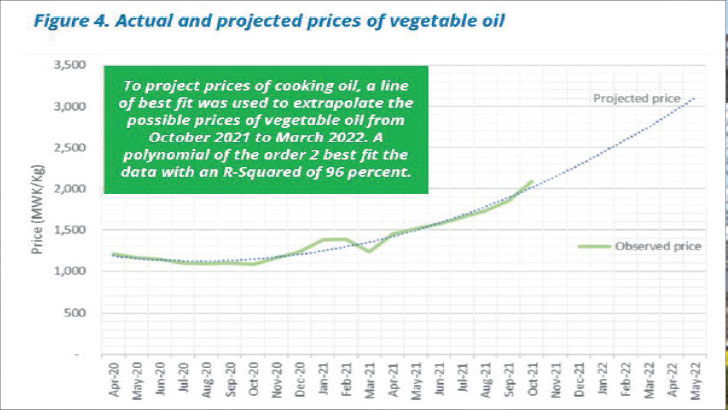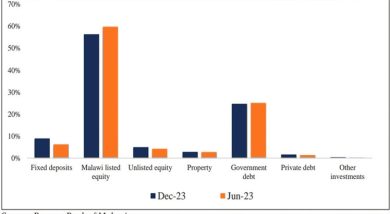Survival expenditure Basket up 6 percent
The minimum amount required to maintain existence and cover lifesaving needs of households has increased by an average of six percent in October from the previous month amid rising prices, published World Food Programme (WFP) figures showed on Wednesday.
In its recent Minimum Expenditure Basket in Malawi, WFP programme said the survival minimum expenditure basket (Smeb), which could involve the deprivation of certain human rights, rose the most in the rural Northern Region and the least in the Rural Southern Region.

Reads the analysis in part: “Data shows that increases in expenditure in October 2021 largely emanated from increases in the prices of cooking oil, green vegetables, cassava, and firewood and charcoal.
“The price of cooking oil has been continuously rising since the introduction of a 16.5 percent value added tax [VAT] on the commodity a year ago and continues to do so due to an increase in the cost of raw materials used to manufacture cooking oil.”
WFP figures show that in urban areas, the SMEB increased by five percent from K63 355 to K66 529 per month, translating to an additional K3 174 per month for a household to meet its basic survival needs between September and October 2021.
The rural Northern Region registered an 8.4 percent increase in Smeb, from K38 638 in the previous round [September] to K41 867 in October 2021 mainly due to a sharp increase of 18.5 percent on non-food expenditure observed in the rural region following price increases for firewood and laundry soap and milling.
In the rural Central Region, Smeb rose by seven percent from K39 939 in the previous month to K42 748 in October again due to a sharp increase of non-food commodities at 18.7 percent, respectively, in this region.
A notable rise in the prices of beans, cooking oil, cassava, firewood and laundry soap necessitated the increases for both components of the Smeb in the region.
In the rural Southern Region, the Smeb rose by 3.8 percent, from September’s K45 447 to K47 161 due to a sharp increase of non-food commodities (20.6 percent) such as cooking oil, firewood and laundry soap.
Consumers Association of Malawi (Cama) executive director John Kapito said consumers should brace for elevated prices in the near-term the kwacha continues to be weaker and as the high global demand persists.
He said: “Looking at these increases especially on cooking oils which have gone up by almost over 100 percent, one would not attribute such an increase to the reintroduction of 16.5 percent value added tax.
“The key drivers for these increases are as a result of high import costs and the weakening of the kwacha.”
Since November 2020, the Malawi kwacha has lost approximately 10 percent of its value against the United States dollar.
Last week, Minister of Trade Sosten Gwengwe said there was little that Malawi could do to hedge against rising prices in the global economy.





